“Home, is where I want to be, But I guess I’m already there, I come home, she lifted up her wings, I guess that this must be the place” – Talking Heads
This month marks my one year anniversary as a resident of the Motor City. Like all states, Michigan has its quirky, state-specific culture that outsiders like myself must learn. It’s about that time of year when many twenty-somethings are beginning to consider their next life transition whether it’s finding a job after college, or interviewing in a few weeks for this awesome fellowship. While I’m still by no means an expert, here are a few things you can expect to learn quickly as an outsider coming to the mitten state.

1. The hand
As noted above, Michigan is often described as the mitten state. One learns very quickly that any native Michigander will use their hand as a point of reference to indicate where they live/grew up/are going.
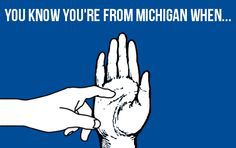
One will also quickly learn that there is a land mass not attached to the mitten, but north and a little west, known as The U.P. (pronounced “You Pea”), short for the Upper Peninsula. Curiously the U.P. is actually closer to Wisconsin, but legally part of Michigan. From what I understand this was actually a huge score for the state after some long ago battle with Ohio, which resulted in a mineral rich land gain equating to more money for Michigan. I also heard its pretty beautiful there.
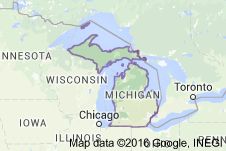
There’s also this “Up North” phenomenon I’ve not quite yet figured out. I currently assume anything north of Detroit is “up north.” I’m committed to sorting this out eventually.
2. Michigan is the blue one, State is the green one.
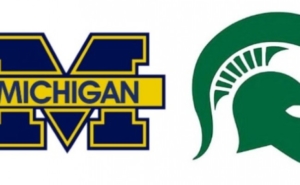
3. Coney Island is not that grimy boardwalk-like amusement destination.
Being from North Jersey, this was my only frame of reference for Coney Island.
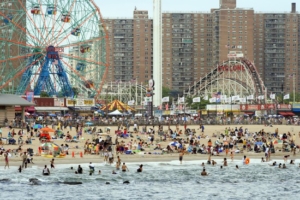
Here, Coney Island is a diner-like chain usually open at all hours and the hot spot to go for late night
food, breakfast, brunch, really anytime. Like a diner, they typically have a pretty extensive menu which contributes to its universality. It’s also worth noting the chains are generally individually owned, and usually have some sort of Greek affiliation.
The original Coney Island in Downtown Detroit was established by Greek immigrant brothers in 1914. In 1917 they got into some sort of argument that resulted in splitting their restaurant in two, Lafayette Coney Island and American Coney Island, which are still located next to each other and thriving to this day.
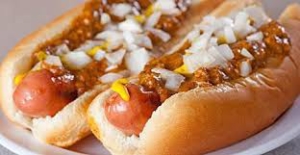
While the menus at different Coneys may vary, they all center around the “Coney Dog” which is basically a chill cheese dog. How this is Greek is still unclear to me, albeit delicious.
It’s also worth noting that aside from the Coney Islands you will basically pass every couple blocks within Detroit proper and beyond to the sprawling suburbs, there is also an abundance of Mediterranean and Middle Eastern cuisine. I quickly learned that Southeast Michigan has the largest Arab community outside the Middle East.
4. It’s called Motor City for a reason.
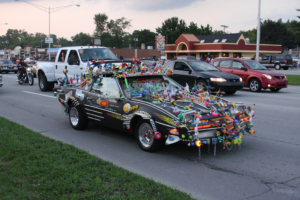 Before moving here I knew vaguely that Detroit was known as the motor city and that all the major US car companies were headquartered here. But I really underestimated how much Michiganders really love their cars. If you drive a foreign car, you will get beeped at. The city was built by auto manufacturers—there’s no public transportation by design. This influence on urban planning also becomes abundantly clear the more familiar you get with the city and its four to six lane local roads that resemble more of a highway than a city street. Every year there is the annual North American International Auto Show which seems to be a pretty big deal no matter what business you’re in. Its major charity event is affectionately referred to by locals as the Auto Prom.
Before moving here I knew vaguely that Detroit was known as the motor city and that all the major US car companies were headquartered here. But I really underestimated how much Michiganders really love their cars. If you drive a foreign car, you will get beeped at. The city was built by auto manufacturers—there’s no public transportation by design. This influence on urban planning also becomes abundantly clear the more familiar you get with the city and its four to six lane local roads that resemble more of a highway than a city street. Every year there is the annual North American International Auto Show which seems to be a pretty big deal no matter what business you’re in. Its major charity event is affectionately referred to by locals as the Auto Prom.
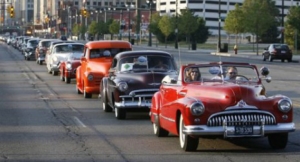 Every summer there is the dream cruise parade which entails really old, nice cars being driven down Woodward all the way from the suburbs to the city. But I think when this cult-like cultural phenomenon really hit me was driving down Woodward on any given summer day and seeing people gathering with lawn chairs and children to check out each other’s cars. Seriously, people just park their pretty cars in ordinary suburb strip mall parking lots and pop their hoods for passers-by to ogle over. It’s by no means a bad thing, but as an outsider really something that takes getting used to. It would be like your parents saying to you as a child, “ready to go check out the cars?” as if you were going to watch fireworks. Not to mention this massive car condo complex project, the M1 concourse, currently underway which will allow car buffs a place to store, show off and test drive high end vehicles.
Every summer there is the dream cruise parade which entails really old, nice cars being driven down Woodward all the way from the suburbs to the city. But I think when this cult-like cultural phenomenon really hit me was driving down Woodward on any given summer day and seeing people gathering with lawn chairs and children to check out each other’s cars. Seriously, people just park their pretty cars in ordinary suburb strip mall parking lots and pop their hoods for passers-by to ogle over. It’s by no means a bad thing, but as an outsider really something that takes getting used to. It would be like your parents saying to you as a child, “ready to go check out the cars?” as if you were going to watch fireworks. Not to mention this massive car condo complex project, the M1 concourse, currently underway which will allow car buffs a place to store, show off and test drive high end vehicles.
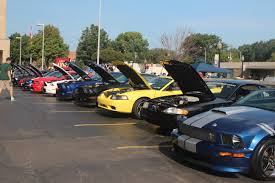 One of the better things Henry Ford was known for was paying his workers a minimum wage, virtually unheard of at the time. I get the impression from most Michiganders the general consensus is Ford valued his employees and to this day many people get discounts on US cars if one of their family members ever worked for its manufacturer (a highly likely scenario in these parts). An older colleague of mine once shared that he was able to earn a full year’s college tuition working a summer job on the assembly line. And I genuinely believe this appreciation for a perceived generous corporate mogul combined with the loyalty of the midwest culture and significant impact the auto industry had on the local economy has shaped Michigan’s car-centric culture.
One of the better things Henry Ford was known for was paying his workers a minimum wage, virtually unheard of at the time. I get the impression from most Michiganders the general consensus is Ford valued his employees and to this day many people get discounts on US cars if one of their family members ever worked for its manufacturer (a highly likely scenario in these parts). An older colleague of mine once shared that he was able to earn a full year’s college tuition working a summer job on the assembly line. And I genuinely believe this appreciation for a perceived generous corporate mogul combined with the loyalty of the midwest culture and significant impact the auto industry had on the local economy has shaped Michigan’s car-centric culture.
One of the better known aspects of Michigan’s car culture is the notoriously high insurance. But what some might not realize is this is actually driven by a “No Fault” policy which basically means the insurance company has to pay benefits after an accident regardless of who caused the accident. There’s also no regulation on what doctors and hospitals can charge, therefore they will charge exorbitant amounts for accident treatment because insurance companies will pay it.
Another noteworthy aspect of Michigan’s driving culture is left lane exits. I think this is more of a Midwest thing than a Michigan thing, but something I certainly never heard of growing up on the East Coast. Where I come from, we turn right to go left because the left lane is universally known as the fast lane and merging on and off the highway using the left lane is dangerous.
And this brings me to the Michigan left. Yes, you can turn left on red. See diagram below.
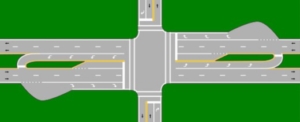
5. Streets have 2 names
To make it even more confusing than finding your way around Detroit’s hub-and-spoke model one will find Detroit’s streets and highways commonly use two names.
- I-75 is also the Fisher
- the 10 is also the Lodge (another major freeway)
- Most mile markers use their number (8 mile, 7 mile, etc.) For some reason 6 mile is also McNichols
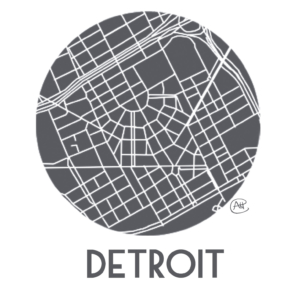
6. Cross Streets, I recently learned are how true native Detroiters describe where they live, not actually by neighborhood.
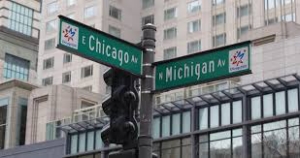
7. Michigan Slang
Like other midwestern states, It’s pop not soda.
But what I was more surprised to find is lollipops are more commonly referred to as “suckers.”
8. Paczkis are these yummy doughnut-like pastries of Polish descent.
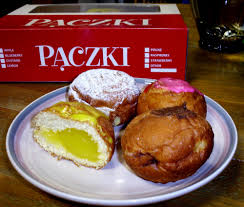
Here these are such a big deal they have their own annual festival in Hamtramck, which is more or less Detroit’s version of a Mardi Gras bash.
9. Detroit Brands – these are common household names you will inevitably hear about and hopefully try when living in Detroit:
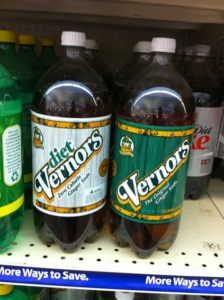
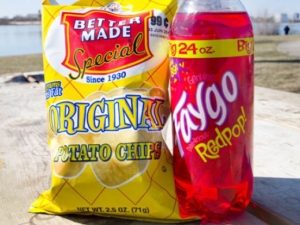
- Vernors – Detroit’s version of Ginger-ale
- Faygo – a brand of soda
- Sanders – a local bakery/confections store that expanded to over 50 stores in the region and was eventually sold to a larger candy brand, known for their “Bumpy Cakes”
- Bosco sticks – these may be a larger Midwest phenomenon but one I never heard of until moving here. Essentially this is a mozzarella stuffed breadstick with special Bosco sauce. It’s delicious, period.
10. Detroit Icons – one quickly comes to realize Detroit has been consistently perceived as being controlled by a few wealthy families (the Dan Gilberts, Illitches, and Fords) an outsider may not necessarily hear about these more historic local icons:
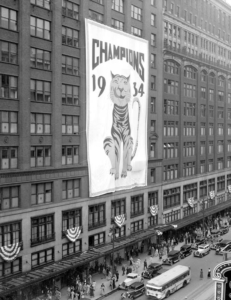
- Hudson’s – a massive department store located on Woodward and Gratiot and synonymous with
Christmas and fashion in Detroit. Founded by Joseph Lowthian Hudson. - Kresge’s – what started out as a local “dime store” and later became Kmart which was eventually sold to Sears. Founded by Sebastian Spering Kresge, he also established one of the areas major non-profit organizations The Kresge Foundation.
- Briggs stadium – where the Tigers played before Comerica park. Locals seem to be very sentimental about this location, and there’s been an ongoing controversy about what to do with the space.

